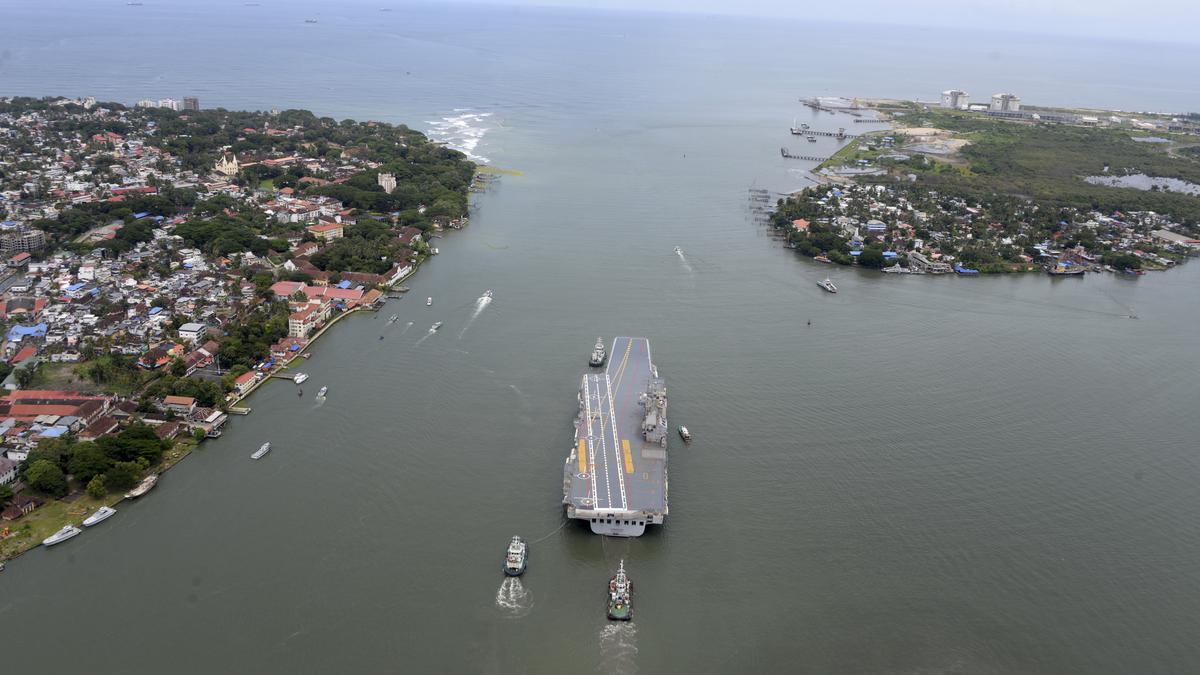News Highlight
Warship Programme: with an inimical China planning a large carrier force, India can fall behind in its sea control and maritime deterrence capability.
Key Takeaway
- At the annual press conference on the eve of Navy Day (December 4), the head of the Indian Navy stated earlier this month that the Indian Navy had postponed plans to construct a second indigenous aircraft carrier (IAC-2) that is larger than IAC-1 (INS Vikrant).
- Aircraft carriers can be divided into light, medium, and large/super-carriers.
- Light carriers may accommodate up to 25 aircraft, medium-sized ones between 30 and 50, and large/supercarriers of more than 90.
- They fall into the fleet, escort, air defence, amphibious assault, and anti-submarine warfare (helicopter) carriers, depending on their function.
- They can be divided into three categories based on the technique used to launch and recover the aircraft: vertical/short take-off and landing (V/STOL) carriers, short take-off but arrested recovery (STOBAR), and catapult-assisted take-off but arrested recovery (CATOBAR).
Warships
- Background
- The galleys and triremes of Classical Greece and the Roman Empire may have been the forerunners of modern warships.
- They were staffed by oarsmen who engaged in ramming since they were long and thin, allowing boarding action.
- Ancient maritime warfare took on a new dimension with the development of on-ship weaponry, allowing for the siege of coastal villages and towns.
- Ramming gradually lost popularity, while boarding was used up to the late 14th century.
- When cannons were developed, ships became too heavy to be propelled by oars alone. Therefore, warships started to rely on sails.
- The sails made them more manoeuvrable, and the cannons on board allowed them to shoot down boarding parties from afar.
- The creation of these ships soon made it possible for Europe to colonise other lands and eventually rule the world’s major oceans.
- Steam engines were created due to the industrial revolution in the 19th century, and sails became less common as they were installed aboard warships.
- Battleships propelled by steam began to replace sailing ships of the line in the 1850s, while sailing frigates were replaced by cruisers propelled by steam.
- Submarines and torpedoes were consequently created to combat such large vessels.
- Airpower became significant with the invention of aircraft and their military variants.
- Soon after the start of World War II, the Aircraft Carrier, a new class of warships, was introduced.
- Major naval nations still own at least one aircraft carrier nowadays, and many navies all around the world use them as their flagships.
Types of Warships in the 21st Century
- Aircraft Carriers
- An aircraft carrier is a battleship with a full-length flight deck and areas for storing, preparing, deploying, and recapturing aircraft.
- As it enables a naval force to project air power globally without relying on local bases for staging aircraft operations, it is typically the capital ship of a fleet.
- Cruisers
- A cruiser is a type of warship.
- After aircraft carriers and amphibious assault ships, modern cruisers are often the largest ships in a fleet and can serve in various capacities.
- As of 2021, only two countries operate vessels formerly classed as cruisers: the United States and Russia, and in both cases, the vessels are primarily armed with guided missiles.
- Destroyers
- A destroyer is a fast, manoeuvrable, and long-lasting warship designed to accompany larger ships in a fleet, convoy, or battle group and protect them against solid short-range assaults.
- As surface combatant ships, destroyers were the norm at the beginning of the twenty-first century.
- Guided missile systems are typically used as armament destroyers.
- Frigates
- A frigate is a type of warship that has changed in size and function over time.
- A frigate was a warship designed for speed and manoeuvrability in the 17th century.
- Corvettes
- A small warship is called a corvette.
- It is customarily the smallest class of ship regarded as a legitimate warship.
- The sloop-of-war was historically the class of vessel below the corvette, and the frigate was the warship class above it.
- The contemporary sub-classes of ships are the quick attack craft, missile boats, and coastal patrol craft.
- Submarines
- Firstly, a vessel that can operate independently underwater is known as a submarine.
- Regardless of size, submarines are referred to as “boats” rather than “ships.”

Pic Courtesy: The Hindu
Content Source: The Hindu



